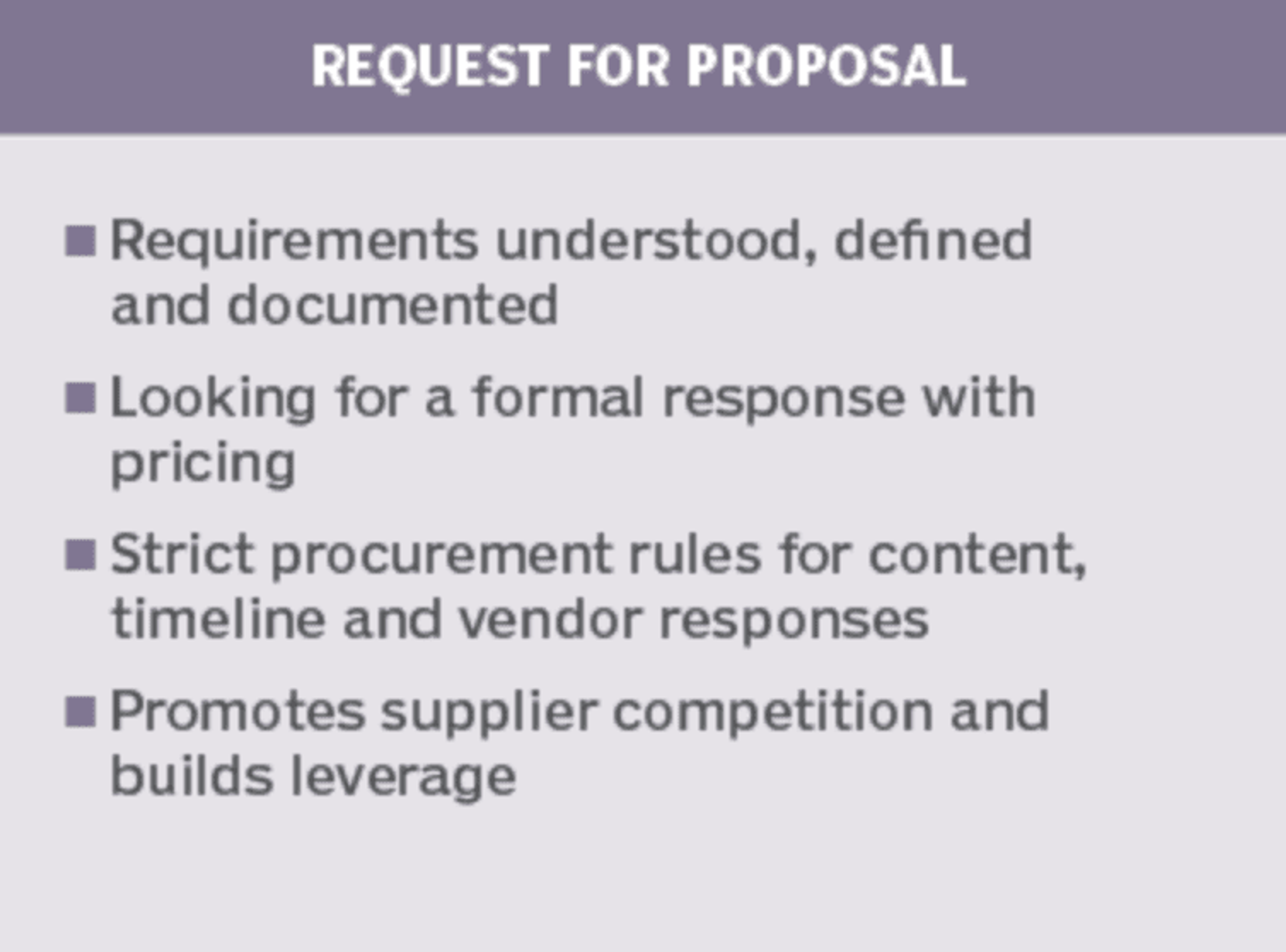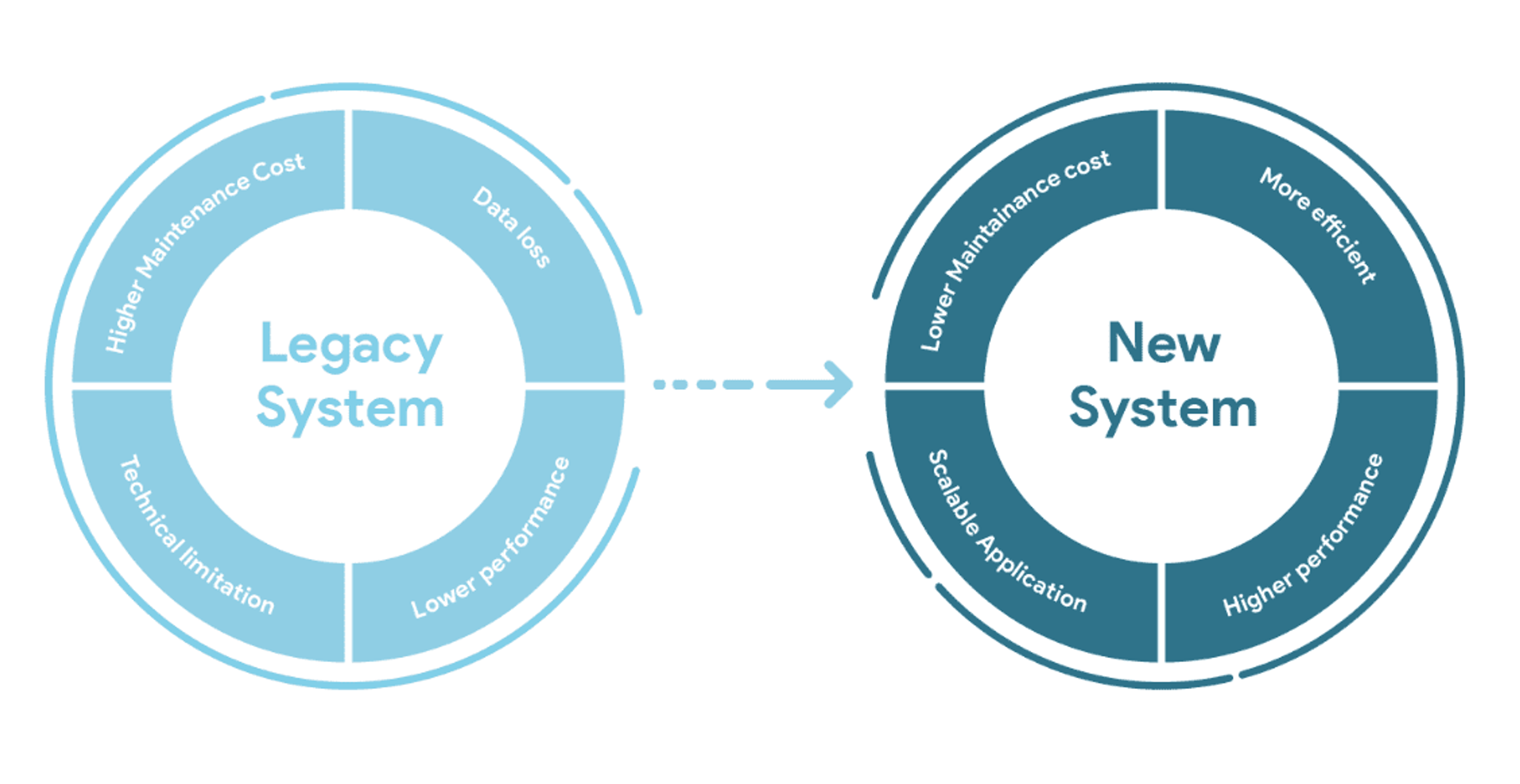blog
Rethinking the Request for Proposal (RFP) Process in Enterprise Software Procurement

SECTIONS
Global business spending on enterprise software and IT solutions has more than doubled in the past five years, growing from $477 billionOpens in a new tab in 2019 to $856.03 billion in 2023. Factors driving this growth include increased demand for cloud software services for remote workers, cost-efficient developments in cloud storage and computing technology, and diversification of device types such as smartphones, laptops, and tablets among office workers.
With software companies leaving approximately 20% of requests for proposalsOpens in a new tab (RFPs) unfinished, organizations across industries should reevaluate their enterprise software procurement processes for improvement opportunities.
In this guide, you’ll learn what an RFP is and how organizations can modify the process to achieve a more comprehensive understanding of the marketplace and ultimately find optimal software solutions.
Key Takeaways:
- Business spending on enterprise-level software is on the rise.
- Most large organizations rely on requests for proposals (RFPs) to obtain competing software proposals from vendors.
- The dependence of the RFP process on upfront technical requirements often limits an organization’s options. Replacing this process with a request for solution (RFS) solves this problem.
What Is a Software Request for Proposal (RFP)?

In enterprise software procurement, an RFP refers to formal requests organizations submit to software vendors. These requests seek specific information about software products, features, and costs, which is used to weigh the pros and cons of software options and make informed decisions.
For software companies, receiving RFPs is an opportunity to acquire new customers and showcase their best products in targeted sales pitchesOpens in a new tab. RFPs typically contain information about the soliciting organization’s needs so vendors can match features to use-cases and draft a compelling argument that their product outperforms competitors’.
In format, RFPs usually include both detailed technical specifications for review by IT teams and user-friendly feature descriptions for non-technical stakeholders.
Why Do Organizations Use RFPs to Evaluate and Purchase Software?
For large organizations with diverse and complex IT needs, committing to enterprise-level software can be a risky venture. Procurement teams must carefully consider a long list of technical requirements, choose a sufficiently capable and accessible interface for users of different technical backgrounds, and stay within budget. Getting even one of these tasks wrong can leave a business stuck with a costly and ineffective solution.
RFPs attempt to mitigate these risks upfront by getting customized proposals directly from the software vendors. By issuing RFPs to a wide range of potential vendors, organizations gain a better understanding of their options than procurement teams can derive from just broadly targeted marketing materials.
Potential Drawbacks of the RFP Process
Organizations draft RFPs to obtain highly targeted information about different software platforms. While responding vendors may propose optional variations, nearly all will have their teams begin proposals by addressing the required technical specifications. As such, organizations often limit the range of proposed options to their own teams’ understanding of how to meet technical requirements.
Consider the following analogy: A family preparing for a summer vacation contacts a few travel agencies to compare their options for different package deals. They have a good idea of what they want and give the agencies a detailed list of criteria to meet, including:
- Budget
- Passes for five days at Disney World
- Specific dates
- Hotel reservations within 10 miles of Disney World
- Air travel between JFK and Orlando International Airport
- Plans for a 1-2-day outdoor excursion within 20 miles of the hotel
Within these parameters, a competent agent working with the necessary tools could reliably identify the lowest-cost options and provide suggestions for the amount remaining under budget. On the family’s end, if they contacted half a dozen agencies and five of them returned proposals within the same price range, they would feel reasonably confident that they were getting the best proposal for their budget.
However, the best in-budget proposal might not deliver the best vacation. By listing specific criteria upfront, they may unknowingly cross better options off without realizing it. Alternatively, if they simply told agents their budget and described activities they enjoy, a knowledgeable agent could propose a wider variety of options than they knew were available, such as international destinations or cruises with stops at other theme parks.
In enterprise software procurement, adherence to a strict RFP process that prioritizes technical criteria according to the requesting business’ understanding of how to solve their own problems runs the risk of obscuring potential solutions rather than identifying them.
Rethinking Procurement with a Request for Solution (RFS)
To access a wider variety of options, some enterprises have replaced the RFP process with a format called request for solution (RFS). An RFS differs from an RFP in how the requests ask responding vendors to identify optimal software configurations.

Rather than specifying technical requirements, an RFS describes an organization’s most pressing challenges and the capabilities they need to meet them. While this may seem like a minor difference at first, using an RFS changes the procurement dynamics by inviting innovative solutions that procurement teams may be unaware of.
For example, when transitioning from custom legacy IT to cloud-based software-as-a-service (SaaS), challenges such as hosting, cybersecurity, and scalable data management don’t have single best-case solutions. Often choosing a solution in one area – such as cloud-native vs. hybrid cloud environments – dictates the optimal configurations for another.
When vendors consider challenges holistically – rather than lists of specifications – they can identify creative, highly customized solutions that address unique operational needs.
Healthcare Master Data Management with Coperor by Gaine
Coperor’s master data management solution allows healthcare organizations to unite data across systems, companies, and platforms. With an unrivaled healthcare-focused data model capable of integrating thousands of custom objects and attributes, Coperor handles the unique challenges of healthcare data management.
Contact Gaine today to see how Coperor can benefit your healthcare organization.
